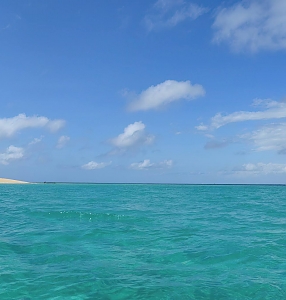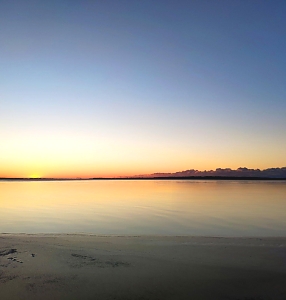Usambara Mountains
Usambara Mountains
The Usambara's are a part of the ancient Eastern Arc chain which mountains stretch in a broken crescent from the Taita hills in southern Kenya down to Morogoro and the southern highlands. They are estimated to be at least 100 million years old and the rocks forming them may be as much as 600 million years old. The mountains are home to an exceptional assortment of plants and animals and represent one of the highest degrees of biodiversity on the continent.
The range is accessible from the towns of Lushoto in the west, and Amani Nature Reserves in the east, approached from Muheza, with its botanical garden, butterfly farming, tea & spice plantations. The Usambaras are commonly split into two sub-ranges, the West Usambaras are separated from the East by a valley and are approached via the district centre of Lushoto. The East Usambara is closer to the coast, receives more rainfall, and is significantly smaller than the west.
The mountains boast of over 3000 plant species in total and over 600 tree species. The Usambaras are part of the Eastern Arc Mountains which run parallel to the Tanzanian coast extending into Taita Hills in Kenya, and recognized as one of the world’s biodiversity hotspots. This exceptional diversity attracts naturalists and nature lovers from all over the world who come to watch birds, study trees and flowers or butterflies.
The Usambara Mountains, situated in the north eastern part of Tanzania, are known for their pleasant climate, beautiful view points and fertile slopes. Favoured by the Germans and English during colonial times, the area is rich in historical buildings from the period. Excursions, which take half day or less, will include hiking and visits to Wasambaa villages, where visitors may have a glimpse of daily life of the local people.
Irente Viewpoint
From Lushoto, hike to this outlook for spectacular views of the village of Mazinde and the Maasai plains almost 1000 meters below. Eat lunch at the Irente Biodiversity Farm in their beautiful flower garden. The trip can be extended with visits to a nearby waterfall and the viewpoints of Kambe and Kwa Mkeke.
Hiking: (5-6 hours, 15 km)
Kisasa Waterfalls
Visit to Kisasa waterfall, a walk through farmland and planted forest to reach this beautiful sight. It is worthwhile to note that the Kisasa waterfall is more majestic than the Mkuzi waterfall however unlike the Mkuzi waterfall, Kisasa waterfall does not have pool for swimming. Also note that the climb down to the waterfall is quite steep. Enjoy your picnic lunch at the waterfall.
Hiking: (4-5 hours)
Magamba Forest
Walk uphill from Lushoto to the royal village of Kwembago, where you learn about the cultural history of the Kilindi ruling clan. From Kwembago you have a beautiful view of Lushoto and the Maasai plains. Proceed to the Magamba rainforests, home to black and white colobus monkeys. Return via an old German Middle School, a German trench dug during the First World War and the village of Magamba.
Hiking: (4-5 hours)
Growing Rock
The “Growing Rock” tour starts from Soni. Walk to the top of the Kwamongo mountain, famous for its butterflies, enjoy views of Soni, Lushoto and the Handeni plains from the peak. Visit the villages of Shashui and Kwemula on the way. Descend to the village of Magila at the foot of the “Growing Rock” to visit a soil conservation project and learn the mystery about the rock.
Bangala River
Walking along river valleys, sometimes wading through the water, you descend to the village of Bangala. On your way you have a beautiful view over the Maasai plains, you will see a traditional irrigation system and can visit a Wasambaa farm. In Bangala you can visit the tree nursery at the primary school and see traditional irrigation systems.
Hiking: (4-5 hours)
Magamba Rainforest
Walk through villages and farm land to the lush rainforest where you can see black-and-white Colobus monkeys. Hike to the peak of the forest where you can enjoy the view of lushoto town and the royal village while you have your lunch, on the way back, pass by the historic royal village of the Kilindi (the Washambaa ruling clan) and an old German bunker dug during World War I.
Hiking: (4-5 hours)
Mkuzi Waterfalls
Drive and then start walking to Mkuzi water fall where you will enjoy the pleasant environment and later walk back to Lushoto
Hiking: (4-5 hours)
Ndelemai Forest
Visit one of the primary tropical rain forest which remains after the destruction of forests in Usambara Mountains and get a big chance for sporting animals such as Columbus monkeys, squirrels, butterflies, chameleons, flowers endemic species such as Ocotea usambariensis. Also you can visit Sakhrani mission for trying macadamia nuts.
Hiking: (4-5 hours)
Mtae View Point
This is combination of various attractions such as visiting traditional village, rain forests, A world view point, pottery women. During this trip you will be able to see much more of the traditional lifestyle of the Shambaa people. Don’t miss it as it will make your holiday memorable.
Hiking: (3-4 hours)
FAQs
Usambara Mountains
Although the climate is comfortable year-round, paths get too muddy for trekking during the rainy season from March through May. The best time to visit is from June to November, after the rains and when the air is clearest.
Dar es Salaam - Lushoto: 6 hrs - Dar es Salaam - Mombo: 5 hrs
The Usambaras are approximately 90 kilometres (56 mi) long and ranging from 30'50 kilometres (19'31 mi) in width
Destinations near Usambara Mountains
These nearby destinations have a lot to offer















